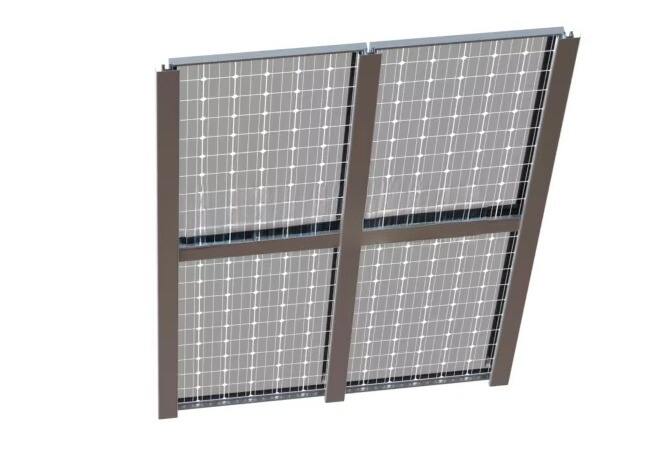Solar canopies are dual-purpose structures that combine solar panel arrays with overhead shelter, providing shade or protection for outdoor spaces while generating renewable electricity. These canopies are versatile, used in parking lots (solar carports), patios, bus stops, or industrial yards, merging energy production with practical utility. Constructed from high-grade materials, solar canopies feature a frame of aluminum alloy (6082-T6) or galvanized steel for structural support, with corrosion-resistant coatings to withstand rain, UV radiation, and temperature extremes. The frame is designed with clear spans (distance between columns) of 4–10 meters to cover large areas, supporting solar panels mounted on tilted rails (10°–30°) for optimal sunlight capture. Solar canopies support 60-cell or 72-cell panels, arranged in portrait or landscape orientation, with spacing to avoid shading between rows. Key features include integrated drainage systems (gutters and downspouts) to channel rainwater away from covered areas, LED lighting for nighttime visibility, and optional EV charging stations (with wiring routed through columns). Safety is prioritized, with structures meeting standards such as AISC 360 (steel design), ASCE 7 (wind/snow loads up to 160 km/h and 4 kN/m²), and IEC 62715 (PV system safety). Installation is modular, with pre-fabricated components reducing on-site construction time by 30–50% compared to traditional canopies. For businesses, solar canopies offer dual benefits: reduced electricity costs from on-site generation and enhanced amenities for customers/employees (shaded parking, protected outdoor spaces). They also contribute to sustainability goals, reducing carbon footprints while utilizing underutilized outdoor areas. Whether in urban or rural settings, solar canopies exemplify innovative design that turns shelter into a renewable energy asset.
